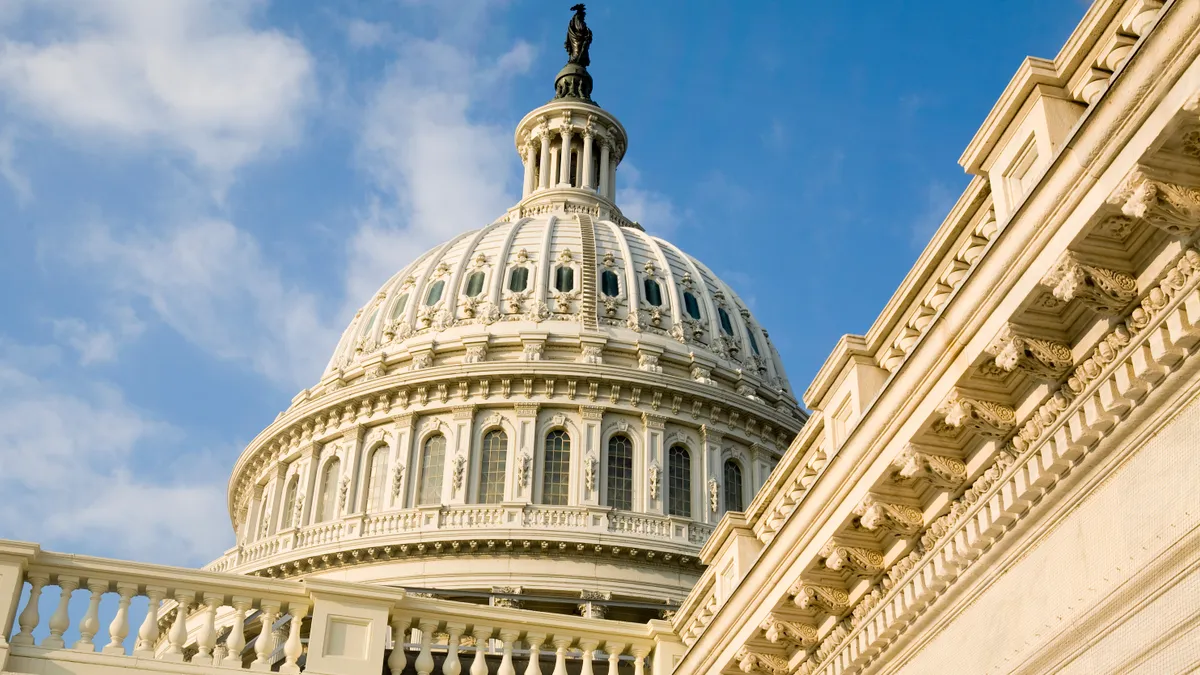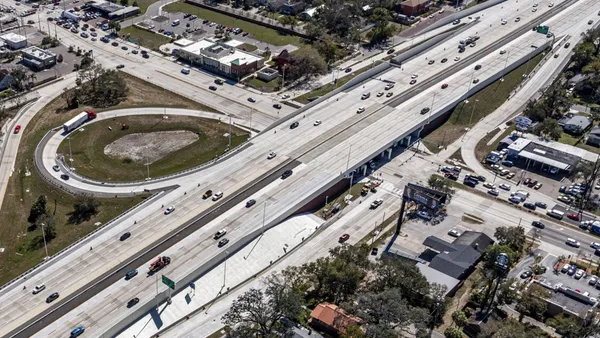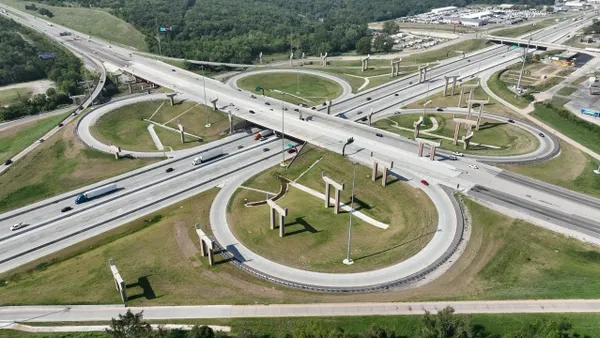UPDATE: Aug. 17, 2022: President Joe Biden signed the Inflation Reduction Act Tuesday afternoon, after it passed the House of Representatives on Friday. It marks the largest federal climate investment in U.S. history.
The original story follows below.
The federal Inflation Reduction Act of 2022 contains more than $5 billion to incentivize the use of low-carbon building materials in public infrastructure projects and certain government-owned buildings.
The sprawling $485 billion bill, which aims to fight climate change and mitigate inflation, passed the Senate Aug. 8 and is expected to go before the House of Representatives Friday. Its various investments and tax credits aim to help the U.S. slash its carbon footprint 40% by 2030, the U.N. Paris Agreement deadline to halve CO2 emissions.
Currently, the bill’s green procurement funding includes:
- $2.15 billion to install low-carbon materials in General Services Administration-owned buildings. The GSA owns about 1,500 buildings around the country, including office buildings, land ports of entry, courthouses, laboratories, post offices and data processing centers.
- $2 billion for Low-Carbon Transportation Grants to reimburse and incentivize the use of low-carbon materials for Federal Highway Administration projects.
- $250 million to develop and standardize Environmental Product Declarations for construction materials, with grants and technical assistance for manufacturers.
- $100 million to identify and label low-carbon materials and products for federally funded transportation and building projects.
The bill also contains $4 billion to improve resiliency in affordable housing, including funds for low-carbon materials, and allows FEMA’s Building Materials program to offer financial assistance for low-carbon materials and net-zero energy projects.
The EPA administrator will identify which materials qualify as low embodied carbon, per the bill, namely those with substantially lower levels of embodied carbon compared to estimated industry averages of similar materials.
Builders react to the bill
Other aspects of the legislation of interest to builders include clean energy incentives, environmental block grants and funding for roads. The administration expects the bill to generate $739 billion over 10 years through a combination of corporate tax increases, increased Internal Revenue Service enforcement and drug pricing reform.
In addition to new funding avenues for various projects, the legislation adds more money for environmental review of projects and ties construction labor mandates for apprenticeships to tax incentives for renewable energy and energy-efficiency projects. Builders’ reactions were mixed.
U.S. Green Building Association CEO Peter Templeton urged the House to pass the bill, saying in a statement, “The act will have a profound impact on communities across the country and will be marked in our history as a turning point in our climate fight.”
However, other industry groups have panned it.
“The Democrats’ deal to hike taxes in support of hundreds of billions more in government spending while we are already contending with record-high inflation would plunge the U.S. economy into a recession,” Association of Builders and Contractors Vice President of Legislative and Political Affairs Kristen Swearingen said in a statement.
Associated General Contractors of America also opposes the measure, arguing its construction apprenticeships mandates and additional funding for environmental review would hold up projects, as would deputizing the EPA for environmental project declarations and carbon labeling.
Low-carbon materials key to climate fight
Building materials are a focus of the Biden administration’s environmental goals because the construction process is highly polluting.
The cement industry alone, for example, is responsible for at least 8% of human-caused CO2 emissions, according to a 2021 study published in the scientific Joule, and cement is the highest consumed product on earth besides water. Swapping highly polluting materials with alternatives that are low carbon, or even store carbon, is key to lowering the industry’s CO2 emissions, experts say.
While there are alternatives to cement, many are in early stages of development and the traditional Portland mix remains profitable. With the new federal funding, contractors can use lower-carbon materials at no extra cost and build their expertise in green construction — a sector that is projected to boom.
If the legislation passes the House on Friday as Democrats aim to do before summer recess, President Joe Biden is expected to sign it.













